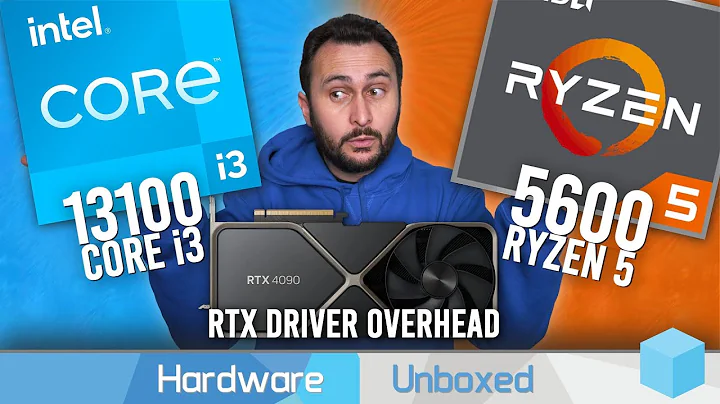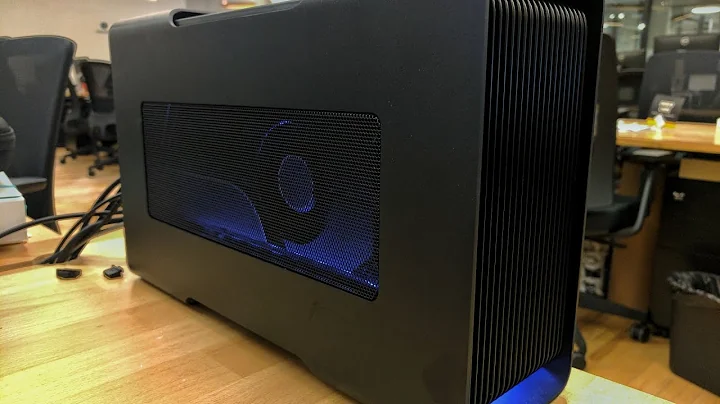How to Manually Update VGA Drivers on Windows 10
Table of Contents
- Introduction
- Why Update VGA Drivers on Windows 10?
- Manual Method to Update VGA Drivers on Windows 10
- 3.1 Checking Internet Connectivity
- 3.2 Identifying the Driver ID
- 3.3 Downloading the Driver
- 3.4 Extracting the Driver File
- 3.5 Installing the Driver Manually
- Updating Other Drivers Using the Same Method
- Conclusion
- FAQ
Introduction
In this article, we will discuss how to update VGA drivers on Windows 10 manually. Although there is an automatic way to update drivers, sometimes it may fail or not be available. Therefore, we will explore the steps to update VGA drivers manually, ensuring that your computer's graphics performance is optimized.
Why Update VGA Drivers on Windows 10?
Before we delve into the process of updating VGA drivers on Windows 10 manually, let's understand why it is essential. VGA drivers are responsible for crucial functions related to your computer's display, including resolution, color depth, and refresh rate. By keeping your VGA drivers up to date, you ensure that your graphics card functions efficiently and delivers optimal performance.
Manual Method to Update VGA Drivers on Windows 10
To update VGA drivers manually on Windows 10, follow these steps:
3.1 Checking Internet Connectivity
Before proceeding with the manual driver update, make sure that your computer is connected to the internet. This is essential because we will be downloading the drivers directly from the internet.
3.2 Identifying the Driver ID
First, we need to identify the driver ID specific to our VGA device. To do this, right-click on the "Microsoft Basic" driver listed in the Device Manager and select "Properties." Then, go to the "Details" tab and change the property to "Hardware ID." Make a note of the topmost value, as we will need it later.
3.3 Downloading the Driver
Open your preferred web browser and navigate to the website "drp.su." Here, we will download the driver manually. Enter the hardware ID that we copied earlier into the search box on the website. Select the appropriate driver based on your Windows version and architecture (32-bit or 64-bit). Click on the "Download" button.
3.4 Extracting the Driver File
After the download is complete, open the folder where the driver file is saved. Typically, it is located in the "Download" folder on the C drive. Extract the driver file by right-clicking on it and selecting "Extract All." Follow the on-screen instructions to complete the extraction.
3.5 Installing the Driver Manually
Now, go back to the Device Manager and right-click on the VGA driver that we want to update. Select "Update Driver" and then choose "Browse my computer for drivers." Navigate to the location where we extracted the driver file and select it. Follow the on-screen instructions to complete the installation. Once the driver is installed, restart your computer for the changes to take effect.
Updating Other Drivers Using the Same Method
The manual method described above can also be used to update other drivers on your computer. Simply follow the same steps but identify the driver ID and download the specific driver for the device you want to update.
Conclusion
Updating VGA drivers on Windows 10 manually can be a simple yet important task to optimize your computer's graphics performance. By following the steps outlined in this article, you can ensure that your VGA drivers are up to date and functioning correctly.
FAQ
Q: Are there any risks involved in manually updating VGA drivers?
A: Manual updating process is generally safe if you download the drivers from official and trusted sources. However, it's always recommended to create a system restore point before making any driver updates, just in case any issues arise.
Q: What should I do if the manual driver update fails?
A: If the manual driver update fails, you can try using automatic driver update software or seek technical support from the manufacturer of your VGA device.
Q: How often should I update my VGA drivers?
A: It is recommended to regularly check for driver updates, especially when you experience issues with your graphics performance. Otherwise, updating drivers every few months should be sufficient.
Q: Can I Roll back to the previous driver version if I encounter problems?
A: Yes, you can roll back to the previous driver version if you encounter any issues after updating. In the Device Manager, right-click on the driver, select "Properties," go to the "Driver" tab, and choose the option to roll back the driver.
Q: Are there any advantages of updating VGA drivers?
A: Updating VGA drivers can bring performance improvements, bug fixes, and compatibility enhancements for new software or games. It also ensures that your graphics card is utilizing the latest features and optimizations provided by the manufacturer.
Resources:
 WHY YOU SHOULD CHOOSE TOOLIFY
WHY YOU SHOULD CHOOSE TOOLIFY


































